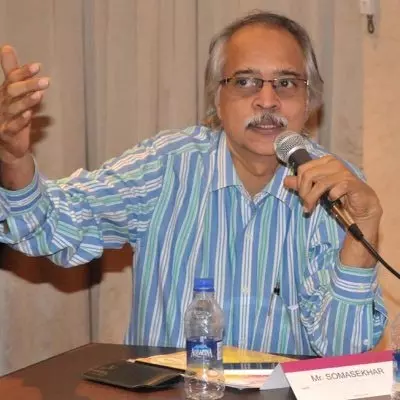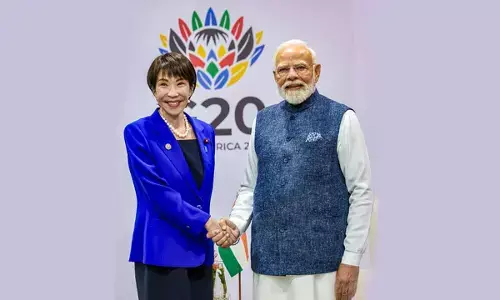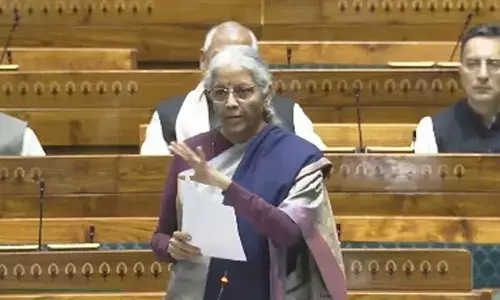The GST fix: Centre Vs States

The GST fix: Centre Vs States
When Prime Minister Narendra Modi famously described GST as the ‘Good & Simple Tax’ which would usher in economic glory at the stroke of midnight on July 1 in 2017, experts saw more hope than pragmatism and hurdles in practise
When Prime Minister Narendra Modi famously described GST as the 'Good & Simple Tax' which would usher in economic glory at the stroke of midnight on July 1 in 2017, experts saw more hope than pragmatism and hurdles in practise.
In August 2020, driven by a slowing economy and hammered down GDP due to the Covid-19 pandemic, the Goods and Services Tax (GST) has been pitchforked into a major fix between the Centre and the States. The utterances of Finance Minister Nirmala Sitharaman that the downside in the economy, the huge contraction in GDP for the April-June quarter by 23.9 percent as the country was in the thick of the Covid-19 pandemic as an 'Act of God', has not gone down well either.
With over 36 lakh cases and the Centre and many States 'all but at sea' in controlling the spiralling cases and a fast sliding economy with huge job losses, the situation is anything but challenging. According to the Centre, the shortfall in collections through GST stood at around Rs 2.35 lakh crore in fiscal 2020-21 so far. The compensation sought by States is estimated to be Rs 3 lakh crore of which Rs 65,000 crore has to be met through chess levied in the GST regime. While the shortfall in GST is Rs 97,000 crore, the balance is due to the impact of Covid-19, the Centre says.
To make matters worse, the Centre is pushing both the 'blame and onus' to meet the bleak fiscal situation onto States, and trying to abdicate its sworn duty to rescue them in the event of a crisis as agreed to at the time of pushing the controversial Bill through in Parliament in 2017.
During the UPA rule led by Prime Minister Dr Manmohan Singh, several BJP-ruled States, including Gujarat by the then Chief Minister, Narendra Modi had not just opposed but vociferously demanded a compensation mechanism to be statutory. That the GST was never going to be a smooth affair was a foregone conclusion.
By asking States to devise their own strategies to bridge the shortfall in GST compensation like borrowing, the Centre has attracted justifiable backlash. The Chief Ministers of Maharashtra, West Bengal, Punjab, Telangana, Delhi, Chhattisgarh etc have openly come out in criticism and demanding that the Centre act more responsibly and borrow. K Chandrasekhar Rao, CM of Telangana argued that "it is clearly stipulated in the GST Compensation Act that full compensation for the loss of revenue shall be paid on a bi-monthly basis. Despite, such mandatory provision, delays have been common, and States have not been paid GST compensation since April 2020".
The best way forward is for the Centre to borrow and compensate States if it is unable to fulfil its obligation, say experts. It will translate into a lower interest rate burden on the States and be more advantageous.
Further, the Central government has the ability to raise resources through means that are not available to States. The exercise of borrowing money will be more efficient and cheaper. In the national context, monetary measures are the monopoly of the Centre at present. The government too has the sovereign right to print money to cover a good part of the deficit. In addition, it should use this opportunity to put more money in the hands of crores of poor, who desperately need for sustenance and which in turn will push up the consumption, argues, former Finance Minister, P Chidambaram.
One more, but sparsely used, short term solution is to dip into the Consolidated Fund of India to come to the rescue of the States. But what the NDA government is trying to do is to extend two options to the demanding States. First, it will provide a special window to States to borrow the Rs 97,000 crore in consultation with the RBI at a reasonable interest rate and term of 5 years to repay. The second option is to borrow the entire, estimated Rs 2.35 lakh crore shortfall under a special window.
By doing so, the Centre is conveniently shifting the responsibility entirely onto the States. In a way, it means asking States to mortgage their financial future to get over the present crisis. This is akin to asking States to mortgage their future to sustain the present. Further, under the ruse of or pretext of Covid-19, pushing States to act, the NDA government is trying to assert its assumed might in a federal set up and shielding its own shortcoming by transferring the problem and saving its image.
That the financial health of most of the States is bad is no secret and it only further complicates the financial relationships between Centre and the States. Sample this for example, the public outstanding debt of Andhra Pradesh is Rs 3,04,500 crore, West Bengal's stood at Rs 4.75 lakh crore, Telangana it is Rs 2.29 lakh crore, Uttar Pradesh, about Rs 6 lakh crore and Maharashtra about Rs 5 lakh crore. Given this reality, what does more borrowing mean is anybody's guess.
Against this background, States are wary about borrowing since it poses multiple hurdles like — FRBM limits, existing and high outstanding loans to service and contend with different and higher rates of interests.
One of the instruments used by States to compensate fiscal deficit and meet revenue shortfalls to fund their projects is to resort to State Development Loans (SDLs). These are basically securities issued by States to raise funds from the open market with approval from the RBI. They are bought by banks, mutual funds, insurance firms and in some instances, foreign portfolio investors.
The RBI had in its report indicated a limit of Rs 1.27 lakh crore for States' market borrowings for the Apr-June quarter for fiscal 2020-21. This is more than 50 percent of borrowings during the corresponding quarter of the previous fiscal. Available data up to July shows a steep rise already in the face of the Covid-19 pandemic as States resorted to cut in salaries, austerity measures etc. This can push up the debt to GSDP ratio, which is a negative factor for ratings.
Market borrowings through issue of short-term and long-term bonds is routinely resorted too by some States. According to CARE rating, from April to July 23 States and a Union Territory have raised Rs 1.8 lakh crore via market borrowings which is 75 percent higher for the comparable period during fiscal 2019-20 at Rs 1.03 lakh crore.
Tamil Nadu tops with a market borrowing of Rs 30,500 crore during this fiscal, followed by Maharashtra (Rs 25,500 crore). Rajasthan and AP too have made substantial borrowings while Telangana resorted to a combination of advances and overdrafts, ways and means and market borrowings.
When we look back at the chequered history of the GST, its loud and clear that the persuasive, lawyer- Finance Minister, Arun Jaitley could push through the Bill based on the promise that if States faced revenue deficits post GST's introduction, the Centre would step in and make good the shortfall in the first five years. The NDA government, though stubborn in relationships with non-cooperating States, showed immense flexibility in bringing about scores of changes in the GST as implementation hurdles raised their head very often.
If the economy was booming, perhaps the lacunae would have been addressed better and ticklish issues of implementation ironed out slowly. But, with the slowdown in GDP, consequent to controversial decisions of demonetisation, global issues and finally Covid-19 impacting businesses all round, the Centre and States have pitchforked themselves into a potential 'eyeball to eyeball' confrontation on revenue sharing.














